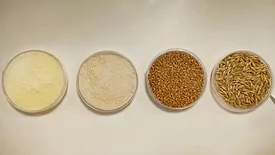Intervention Controls
Unmasking 'Forever Chemicals': Global Insights on PFAS and Urgent Calls to Action—Part 2
In analyzing the PFAS crisis, it is necessary to identify system failures and their resulting health impacts
August 19, 2025
Never miss the latest news and trends driving the food safety industry
eNewsletter | Website | eMagazine
JOIN TODAY!Copyright ©2025. All Rights Reserved BNP Media.
Design, CMS, Hosting & Web Development :: ePublishing











